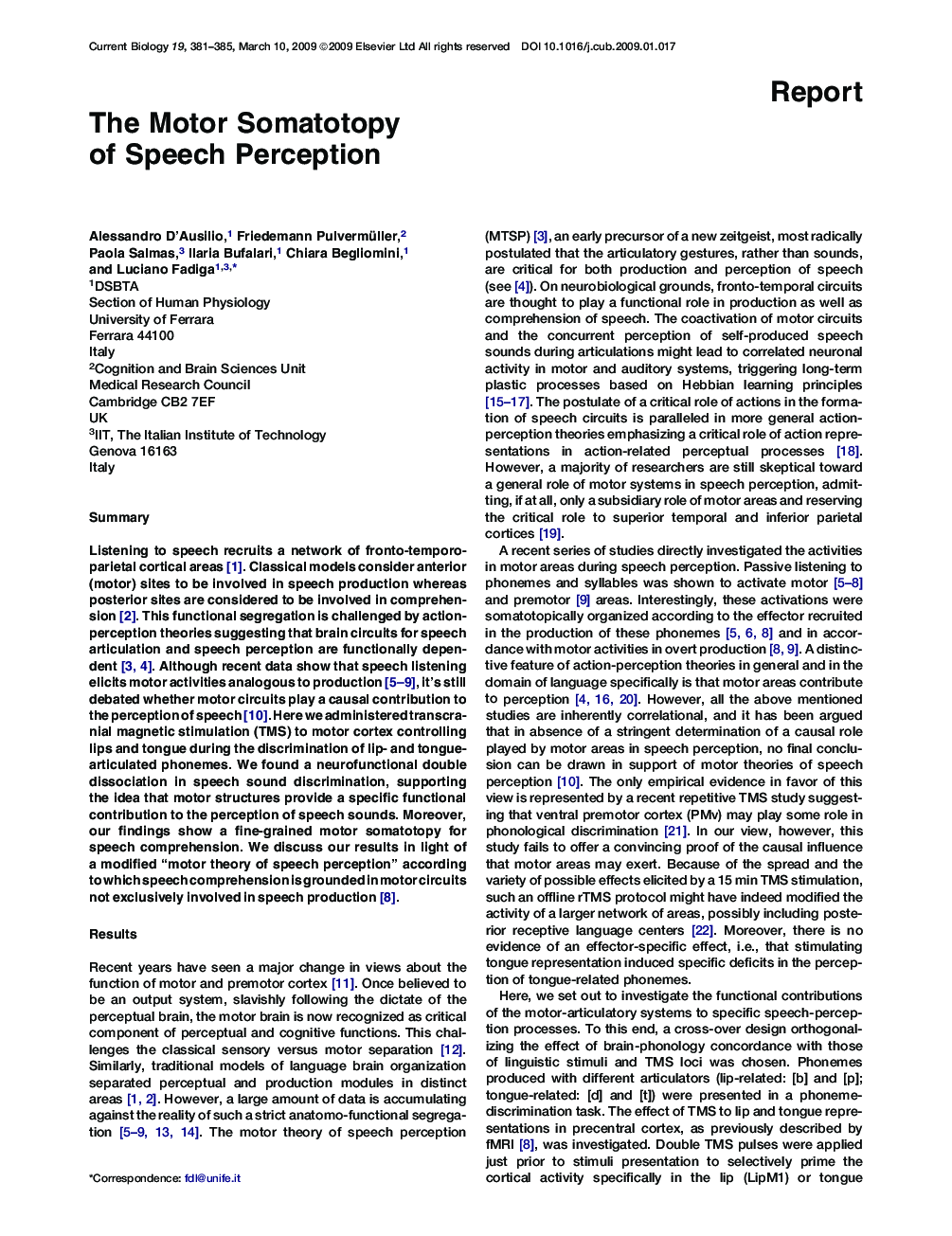| کد مقاله | کد نشریه | سال انتشار | مقاله انگلیسی | نسخه تمام متن |
|---|---|---|---|---|
| 2044361 | 1073418 | 2009 | 5 صفحه PDF | دانلود رایگان |

SummaryListening to speech recruits a network of fronto-temporo-parietal cortical areas [1]. Classical models consider anterior (motor) sites to be involved in speech production whereas posterior sites are considered to be involved in comprehension [2]. This functional segregation is challenged by action-perception theories suggesting that brain circuits for speech articulation and speech perception are functionally dependent 3 and 4. Although recent data show that speech listening elicits motor activities analogous to production 5, 6, 7, 8 and 9, it's still debated whether motor circuits play a causal contribution to the perception of speech [10]. Here we administered transcranial magnetic stimulation (TMS) to motor cortex controlling lips and tongue during the discrimination of lip- and tongue-articulated phonemes. We found a neurofunctional double dissociation in speech sound discrimination, supporting the idea that motor structures provide a specific functional contribution to the perception of speech sounds. Moreover, our findings show a fine-grained motor somatotopy for speech comprehension. We discuss our results in light of a modified “motor theory of speech perception” according to which speech comprehension is grounded in motor circuits not exclusively involved in speech production [8].
Journal: - Volume 19, Issue 5, 10 March 2009, Pages 381–385